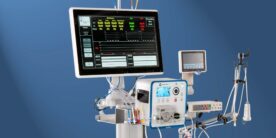

insights
Why The FDA Modernization Act 2.0 is The Challenge Our Industry Needs
Shawn Roach, one of Halloran’s Regulatory Chemistry, Manufacturing, and Controls (CMC) experts, was a panelist at the Advancing Drug Development Forum (ADDF) held in Boston on December 14, 2023. Shawn and his fellow panelists discussed the regulatory implications of the FDA Modernization Act 2.0.
Passed about a year ago, the FDA Modernization Act 2.0 formally overturned the longstanding agency expectation that sponsors of regulatory submissions should include animal studies as part of their nonclinical package. Panelists weighed potential risks of conducting safety studies of a novel drug in alternative models (e.g., studies conducted in silico, using organoids, or employing Artificial Intelligence) against the known risks of studies in animal models.
Panelists noted animal studies are time consuming and expensive, use of animals raises ethical questions, and, most importantly, safety data from animal studies is often not translatable to human subjects, contributing to the high failure rate of drugs in Phase 1 and 2 trials.
The panel recognized clinical trial sponsors’ potential concern that there is no formal guidance yet from FDA on models and studies likely to be acceptable to regulators; however, as Shawn alerted, “pioneers in cell and gene therapies and psychedelic medicines faced this same challenge and overcame it by engaging early with the agency in the drug development process and proposing rational, well-designed safety studies.” Based on draft and final guidances on these topics, the work of these early adopters clearly shaped FDA’s thinking, thus turning this challenge into an opportunity.
Shawn also highlighted FDA programs intended to support sponsors proposing novel responses to the challenge of using non-animal models in determining the safety of their product are available, including The Innovative Science and Technology Approaches for New Drugs (ISTAND) Pilot Program and the Emerging Technology Program (ETP).
The audience also demonstrated interest in the FDA’s ETP program – a collaborative program in the Center for Drug Evaluation and Research (CDER) where drug developers can meet with the Emerging Technology Team (ETT) to discuss, identify, and resolve potential technical and regulatory issues regarding the development and implementation of a novel technology. While change is hard, especially in the risk averse biopharmaceutical industry, this seemingly small change in the law, noting the bill removes the requirement for animal studies and instead allows for the alternatives to animal studies as described above, can be seen as a great opportunity for technology development.
The potential to build and further develop the next generation of tools used to advance safety testing in drug development is immense. Companies with promising technologies can investigate the opportunities to be had through the FDA’s ISTAND and ETP programs. There’s an open door awaiting the journey into the next chapter of drug development. All it takes is the first step.
While acknowledging the risks, challenges, and opportunities in reducing or even eliminating animal studies in drug development, panelists agreed this change is long overdue. Or, as one panelist put it, “It’s about bloomin’ time!”
To discuss FDA’s programs, including ISTAND and ETP, and your regulatory strategy, connect with Halloran today. We’re ready to partner with you.




